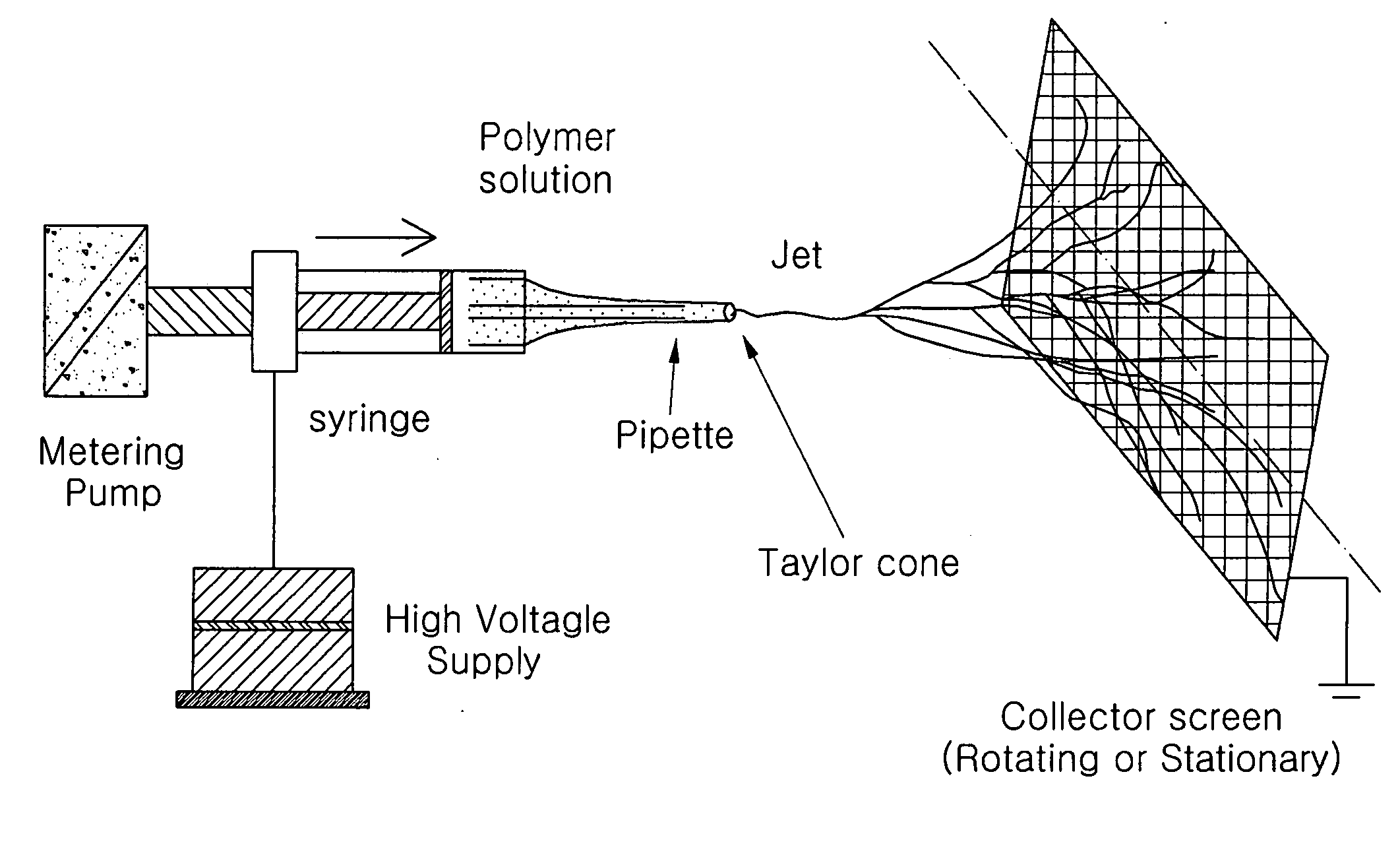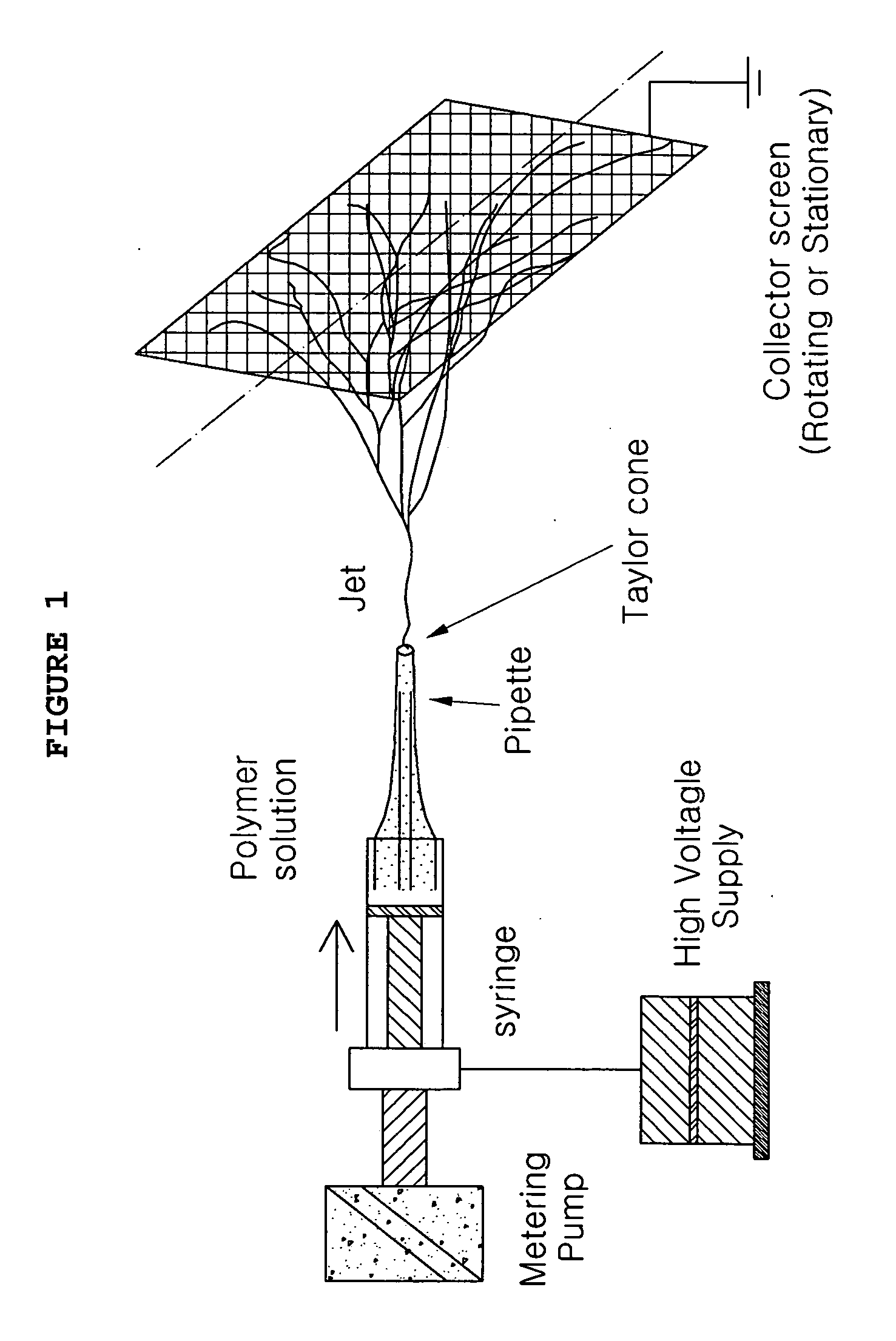Nanofibrous nonwoven membrane of silk fibroin for guided bone tissue regeneration and manufacturing method thereof
a technology of nanofibrous and silk fibroin, which is applied in the direction of skeletal/connective tissue cells, prosthesis, drug compositions, etc., can solve the problems of unremovable membranes made of non-degradable materials, unnecessary inflammation or tissue necrosis, and abscess of new tissue, and achieves easy control of micropore size and process simple
- Summary
- Abstract
- Description
- Claims
- Application Information
AI Technical Summary
Benefits of technology
Problems solved by technology
Method used
Image
Examples
example 1
[0042] Silk fibers pre-washed with hot water were impregnated in water having the weight of 100 times of the fiber weight, and 0.3% sodium oleate by weight of the silk fiber was added to the silk fiber of the above quantity. After heating at 95° C. for 120 minutes and washing, the silk fiber was treated with 0.1% sodium oleate by weight of the silk fiber at 95° C. for 60 minutes. The solution was then neutralized with sodium carbonate solution and washed off several times with boiling water to completely remove sericin. The sericin-removed silk fibroin was added into a mixed solvent having mole ratio of calcium chloride:ethanol anhydrate:distilled water=1:2:8, and dissolved by agitating at 70° C. for 4 hours. The sericin-removed silk fibroin solution was then dialyzed with cellulose dialysis membrane for 3 days in the environment of distilled water to completely remove the salts and ethanol, and a pure silk fibroin solution was obtained. Dry silk fibroin in a sponge form was obtaine...
example 2
[0043] Procedures of this example was carried out with the same method as Example 1, except that the electrospinning was performed by setting the distance between the spinneret and collector screen at 7 cm and voltage at 20 kV. An aggregate of ultra-micro fiber having relatively uniform fineness (210±140 nm) was obtained.
example 3
[0044] Procedures for this example was carried out with the same method as Example 1, except that silk fibroin is dissolved in 1,1,1,3,3,3-hexafluoroisoporpanol to obtain a uniform 7% solution, and the electrospinning was performed by setting the distance between the spinneret and collector screen at 7 cm. An aggregate of ultra-micro fiber having relatively uniform fineness (230±150 nm) was obtained.
PUM
| Property | Measurement | Unit |
|---|---|---|
| pore size | aaaaa | aaaaa |
| thickness | aaaaa | aaaaa |
| thickness | aaaaa | aaaaa |
Abstract
Description
Claims
Application Information
 Login to View More
Login to View More - R&D
- Intellectual Property
- Life Sciences
- Materials
- Tech Scout
- Unparalleled Data Quality
- Higher Quality Content
- 60% Fewer Hallucinations
Browse by: Latest US Patents, China's latest patents, Technical Efficacy Thesaurus, Application Domain, Technology Topic, Popular Technical Reports.
© 2025 PatSnap. All rights reserved.Legal|Privacy policy|Modern Slavery Act Transparency Statement|Sitemap|About US| Contact US: help@patsnap.com



